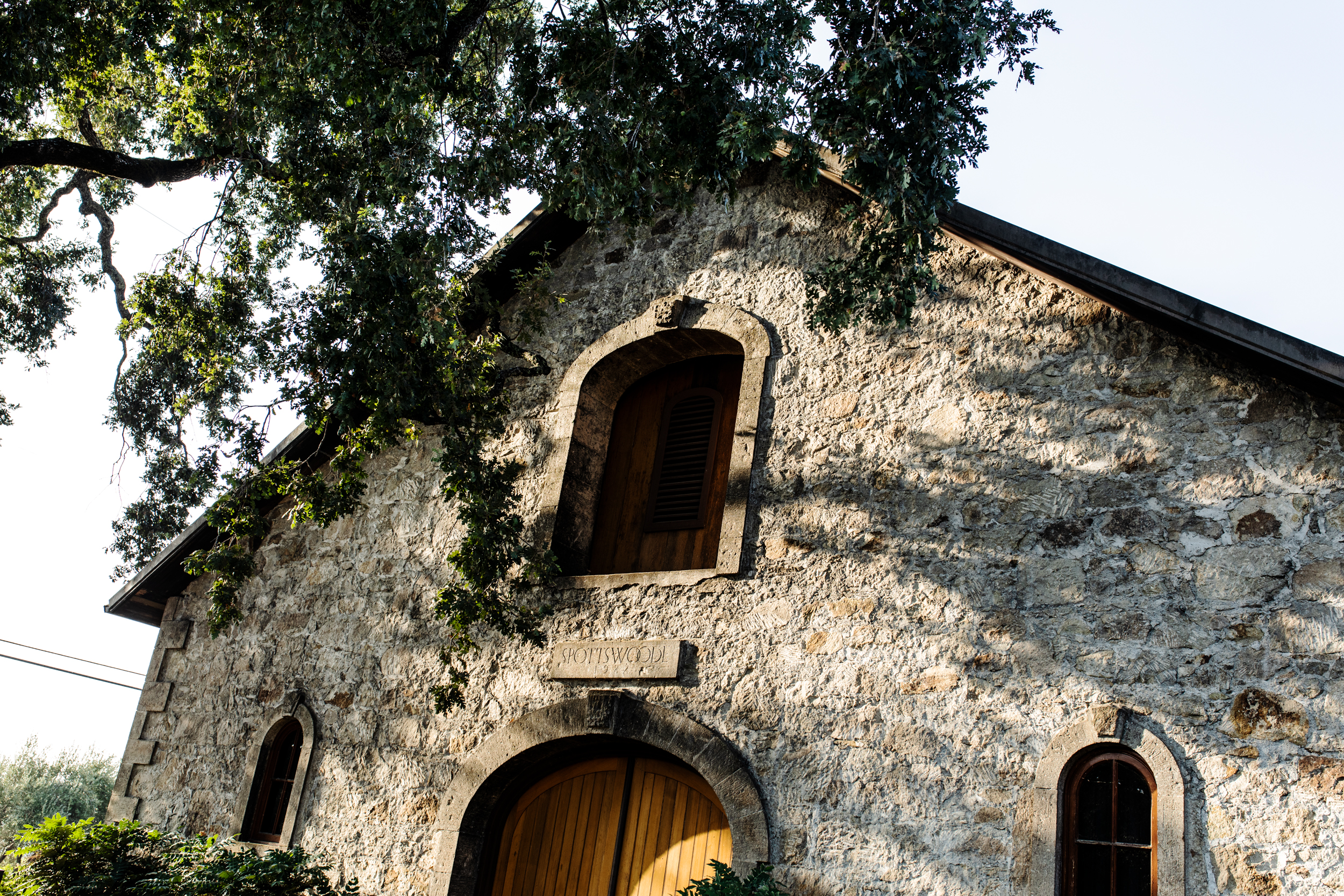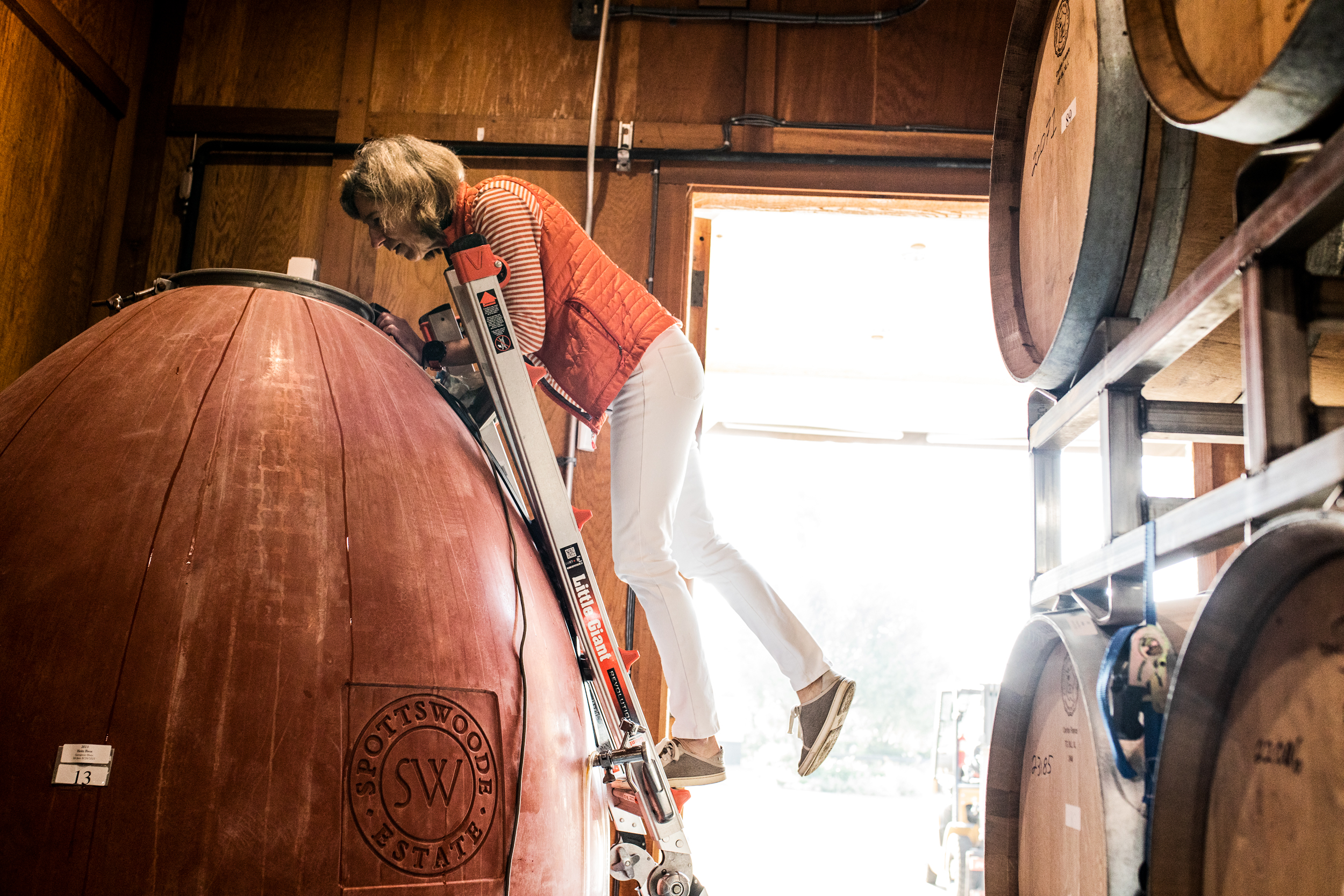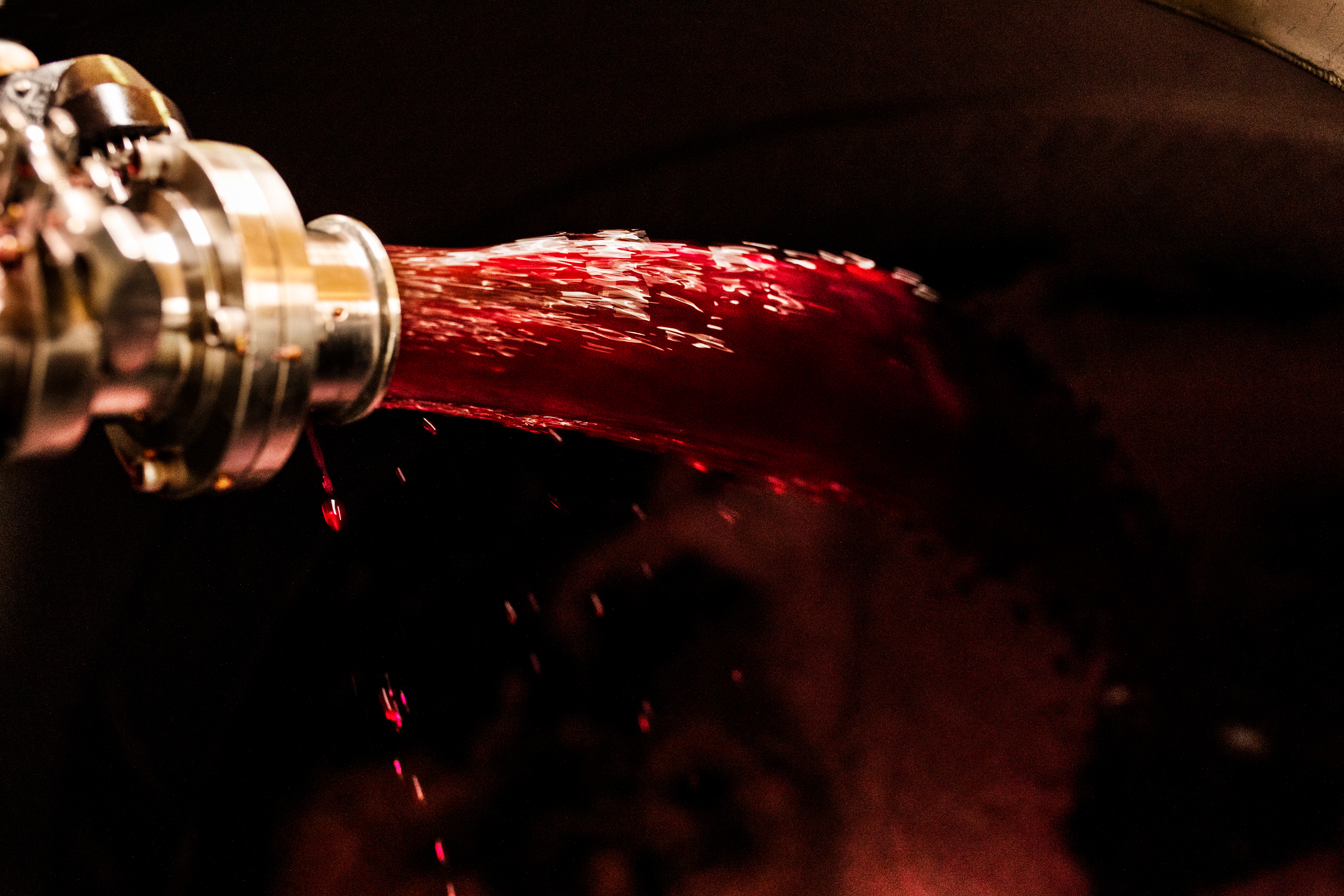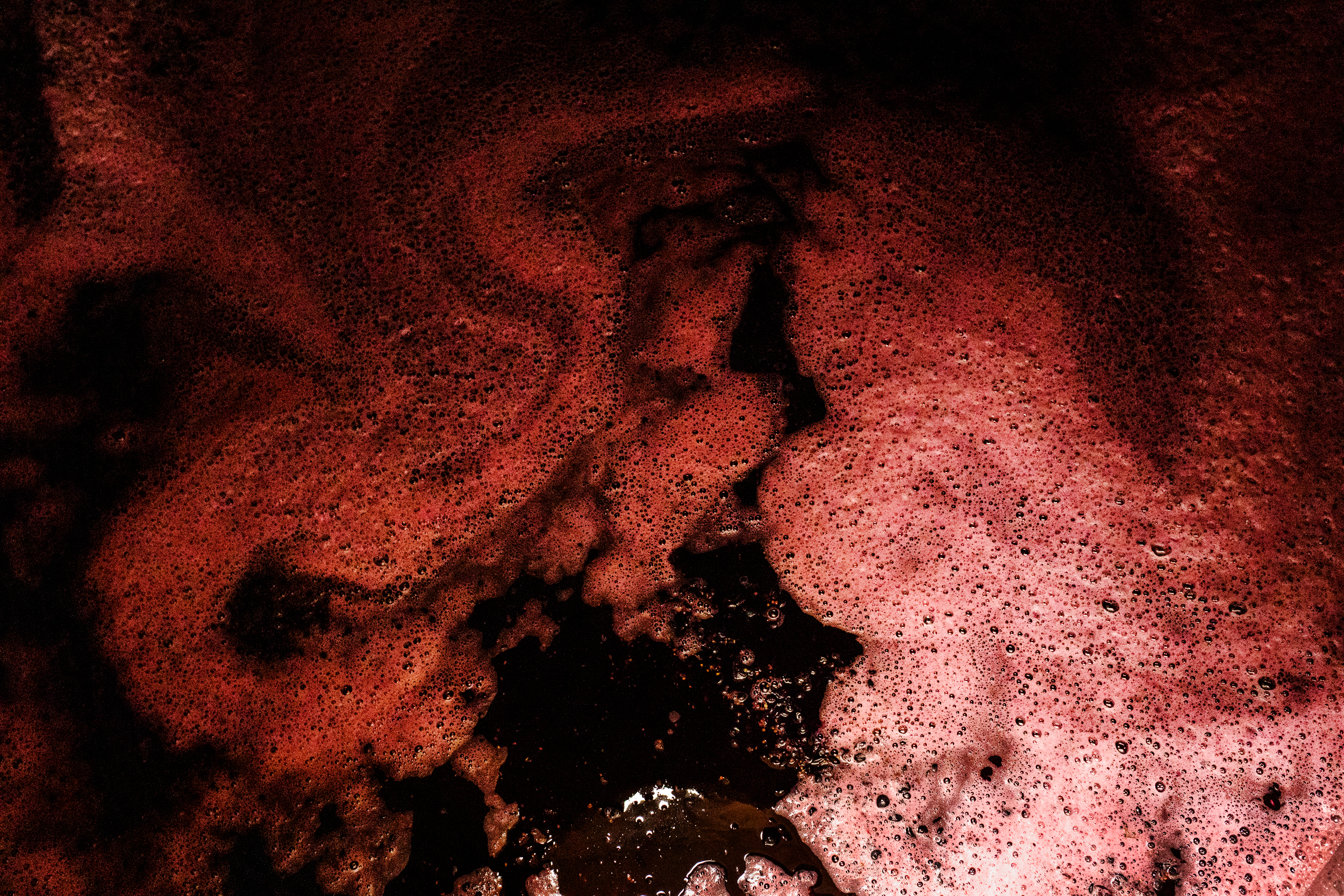04th Jan 2024
I checked in on Beth Novak, President of Spottswoode, and winemaker Aron Weinkauf just as their 2023 harvest started trickling in. This calm period before the storm provided an excellent opportunity to taste the trio of previous vintages—2020 through 2022—looking at the stylistic differences of each year in the context of the winemaking challenges.

The Freshness Challenge
Located in the town of St. Helena, in the foothills of the Mayacamas mountains, Spottswoode’s history goes back to 1882 when 17 acres of vines were planted for wine production. In 1972, the property was purchased by Jack and Mary Novak, and the Novak family has been at the heart of Spottswoode Estate since. In 1977, Jack sadly passed away from a heart attack; he was only 44 years old. Mary assumed management of the estate, selling the grapes to local wineries while raising five young children by herself. In 1982, Mary produced the first Spottswoode Cabernet Sauvignon.
The vineyard has been dramatically developed over the last forty years.
The Novak family soon purchased contiguous land, so the single parcel surrounding the homestead is now 46 acres with 37 acres under vine, separated into more than twenty distinct blocks. The inaugural 1982 and 1983 Spottswoodes were 100% Cabernet Sauvignon from their first 1973 and 1975 plantings, laid out in a classic California sprawl. Unfortunately, all these vines were on AxR1 rootstock and would succumb to phylloxera in the late 1980s, necessitating replanting in the early 1990s.

The backbone variety at the estate is Cabernet Sauvignon.
Since 1984, there has always been a splash of Cabernet Franc (usually 3-10%) in the wine. From 2009, a small proportion of Petit Verdot has been included.
By the early 1990s, two of Mary’s daughters had joined the winery—Beth and Lindy—and the vineyard’s grapes were devoted exclusively to the Spottswoode label. In 2016, Mary Novak passed away at the age of 86, leaving behind a legacy of what is now, undoubtedly, one of Napa Valley’s first growth estates.
Today, Beth is the president and CEO of the estate, while Lindy manages the marketing. The sisters continue to be pioneers in the region for sustainable practices and helping their community. Spottswoode has been at the forefront of sustainability in Napa Valley for over 30 years. The vineyard transitioned to organic farming in 1985, earning organic certification in 1992, making it one of only two organic vineyards in the valley at the time. Spottswoode’s commitment to environmental stewardship is reflected in its biodynamic practices, almost exclusive use of solar power, preservation, and conservation efforts, and its philanthropic practice of donating 1% of annual profits to environmental organizations.
The first vintages of Spottswoode, from 1982 to 1989, were made by Tony Soter. In 1990, Tony’s co-worker, Mia Klein, became the winemaker and stayed until 1992, when Pam Starr took over. Rosemary Cakebread and Jennifer Williams were the winemakers for stints before the current winemaker, Aron Weinkauf, came on board for the 2011 vintage.
Beth, Aron, and I began by tasting the 2020 Lyndenhurst Cabernet Sauvignon and the 2020 Estate Cabernet Sauvignon, which I tasted from barrel during my last visit. The fruit was picked before the Glass Fire broke out on September 27th that year.
One thing that stands out about 2020 is how similar the growing season was to 2017, right down to the Labor Day heatwave and, of course, the fires. Yet, if we take the smoke taint issue out of the equation, the styles are very different, the 2020s revealing more purity and definition than the 2017s, with slightly more weight and alcohol, plus riper tannins.
A few producers, like Spottswoode, have risen out of the destruction of the 2020 wildfires to produce some wonderfully impressive wines.



2021 was a blissfully different story. Apart from yields being down slightly because it was a drought year, it was a textbook great vintage: warm and sunny, without damaging heat spikes. Aron bottled the two Spottswoode 2021 Cabernets in July 2023. While the bright, vibrant, elegantly styled 2021 Estate Cabernet Sauvignon is unsurprisingly outstanding, the quality of the Lyndenhurst this year—an earlier drinking style made from estate-grown and purchased fruit—is remarkable value for a Napa Cab under $100.
“We know Lyndenhurst can usually cellar 10-15 years, but 2021 is special,” commented Aron.
A particularly impressive vintage for this label, I would give this 2021 Lyndenhurst at least 20 years of cellaring potential.
“The 2022 blends are not quite done,” Aron told me when we came to taste the barrel samples of this vintage. “At this stage, we’ve done one racking and the first blending.”
Coming on the heels of the impressive but small 2021 crop, 2022 was tracking to be a relatively effortless vintage for Napa Valley until Mother Nature decided to throw growers a heatwave curve ball during the first week of September. Many winemakers were able to bring in some fruit before and during this heat event, but a significant portion of the Bordeaux varieties were not ripe at this stage. Most Napa vintners had to ride the potentially devastating wave for a proportion of their crop. Fortunately, similarly timed heatwaves had occurred in 2017 and 2020, so evasive strategies were ready to be deployed.
“We always err on picking fruit before the damage is done,” said Aron. “Finding freshness and not going down the path of raisined, overripe fruit was our single focus. Some blocks were at 20 or 21 brix and then overnight went to 28 or 29 brix. There were some under-ripe, overripe characters. Harvest in 2022 was more like triage than we usually do. But, overall, our vineyard performed well. I think that’s because it is a full vineyard with lots of blocks to contribute. Proper fruit shedding and measures like the organic conditions we’ve established with healthy soils helps.”
Nestled within a residential neighborhood of St. Helena, within walking distance of Main Street, and very close to Beckstoffer’s Dr. Crane vineyard and Abreu’s Madrona Ranch, Spottswoode’s vineyard takes advantage of the optimal ripeness that can be achieved in this Napa Valley hot spot. Yet its freshness is a signature that invariably shines through in the wines, even in the warmest vintages. Alcohols tend to be on the moderate side here, usually under or close to 14%, which is a rare achievement considering the levels of phenolic and flavor ripeness that are regularly achieved.
"Ripeness is easily achieved here in St. Helena," Aron pointed out. "The challenge is keeping the freshness."

PRODUCERS IN THIS ARTICLE
> Show all wines sorted by scoreMore articles

Cathiard Vineyard New Releases
02nd May 2024
3 tasting notes

Bordeaux 2023 Preliminary Vintage Report and Reviews from Barrel
29th Apr 2024
56 tasting notes

2021 Bordeaux in Bottle and A Modest Proposal
24th Apr 2024
599 tasting notes

Pilcrow’s New Releases
18th Apr 2024
7 tasting notes
Show all articles